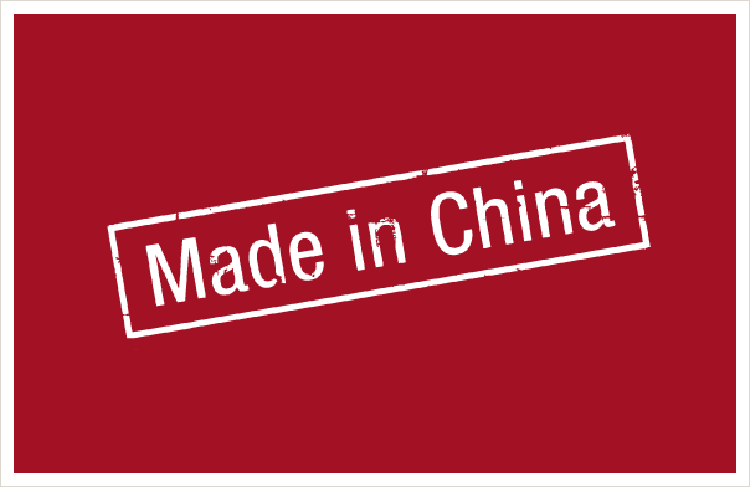“Made In China”: The Next Decade Will Face What Problems
Manufacturing support exports is easy to understand. The manufacturing sector supports investment by purchasing large quantities of manufacturing products – steel, cement, equipment, etc. – and then installing them as infrastructure. Although China enjoys a reputation as a “manufacturing power” in the world, and the gap with the most developed manufacturing countries is gradually narrowing, we must clearly understand that China’s manufacturing industry is facing more challenges than opportunities. In recent years, China’s manufacturing industry is facing many new problems, including independent intellectual property rights, labor costs and the overall industrial quality and so on three aspects.
Today, the overall level of China’s manufacturing industry is still at the end of the international industrial chain, to have independent intellectual property rights of the small number of enterprises, which greatly limits the competitiveness of China’s manufacturing industry and improve the level of profitability. The “three high and one low” mode of production, “high investment, high consumption, high pollution, low efficiency” has become the biggest obstacle to change the mode of development of our country has not been fundamentally changed the current development pattern of backwardness of the manufacturing industry.
In recent years, China’s manufacturing industry is facing many new problems. One of the most prominent is the “Made in China” cost, especially labor costs rise quickly. In 2008, China revised the Labor Law, the 2008 to 2011, the minimum wage level of China to speed up the speed, the average growth rate over last year, more than 20%.
In addition, the “Twelfth Five-Year Plan” requirements, a substantial increase in the proportion of labor income in the national income. Market and policy together with the force, to promote China’s manufacturing labor costs faster growth. Overall, China and developed countries in the labor cost gap, generally from the beginning of the opening of 100 times, contraction for the current 10 times. In addition, we can not deny that a phenomenon is: the quality of China’s manufacturing industry is generally not high and unstable. Since the nineties of last century, migrant workers began to become China’s manufacturing industry, “the main force.” Migrant workers the most important feature of employment is too much liquidity. As the flow of personnel is too frequent, China’s manufacturing industry is difficult to form a basic stability of the industry team.
Clearly understand the reality of China’s manufacturing industry, we have to understand what is really restricting China’s industrial growth is the market demand. At present, the most realistic is the slow pace of global recovery. Since the 2008 crisis hit China, we can observe that when the pace of economic recovery is slightly accelerated, China’s coastal industrial orders on the rise, the recruitment problem is difficult to highlight, the growth of the manufacturing sector is strong.
One possible direction for the Chinese economy is to turn part of China’s ability to manufacture exports to serve the domestic consumer market.
From the current situation, the manufacturing sector changes, and even changes in production technology is underway. But the new industrial revolution, changes in production methods, manufacturing model change is the need for many important conditions. The new round of industrial revolution, the so-called third industrial revolution, is a major innovation in computer, information and Internet technology, which can lead to major changes in industry, industry and society. It will not only lead to a number of new industries Birth and development in order to replace the existing industry, more importantly, it will lead to manufacturing production, manufacturing and even trading patterns, and other important changes.
Now, the manufacturing industry has entered the era of wisdom of the industrial revolution, the future will be toward the development of unmanned factories. Manufacturers improve efficiency by improving technology, the use of information technology to create value, the global “intellectual” made is becoming the trend of the times.
Give a simple example, such as the current production of manufactured products, the first enclosure plant cover, and then from the global procurement of raw materials for processing, the final global sales. This may bring what kind of problem? Transportation costs are high, difficult to search information, transaction costs.
The new production organization may achieve what? It can really be “real estate sales.” Perhaps some manufacturers only need to put in different needs of several Internet-connected 3D printer, what kind of product directly to the raw materials pulled to the store, print directly after taking it. This greatly reduces the cost of transport, custom transaction costs are also significant savings, while custom no inventory, no waste of excess products, so the whole community resources to be a great savings.
These will be the manufacturing industry breakthroughs and reforms. It can be predicted that as long as China’s manufacturing industry “backward advantage” is brought into full play and vigilance is mired in policy mismanagement and system defects, China’s manufacturing power will be accelerated in the next decade.
